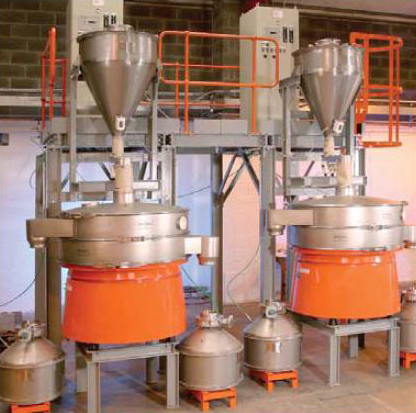
A major tin producer and exporter in China purchased a new centrifugal atomiser that could increase productivity while also reducing product wastage. In order to comply with international standards, the atomised solder powder requires a particle size of less than 45 micron. In addition, to prevent introducing a bottleneck into the production process, the system needed to maintain throughput rates of 110Kg/hr to match upstream processes.
To fulfil these conditions, Atomising Systems chose two 48 in Finex units, which employ a standard drive motor with a separate vibrator housing mounted on a rubber suspension. This allows for a significant increase in sieving efficiency, providing both higher throughputs and greater accuracy of separation, the company says. Russell vibrasonic deblinding systems were also installed onto the meshes to prevent the solder from causing blockages. This is a problem commonly encountered when screening fine powders, resulting in reduced throughputs, increased product wastage and costly downtime. Unlike conventional mechanical deblinding systems such as discs or balls that can contaminate or damage the screen mesh, these systems energize the wires by applying an ultrasonic vibration, reducing the friction between the product and the screen keeping the mesh clean continuously.
The Finex separators are also purged with nitrogen to prevent the powders from being oxidised. This is done by delivering nitrogen via an internal pipeline into a fully sealed container where the solder is deposited once atomised. These containers are then inverted and the solder is fed into the nitrogen-purged separators.
“The atomising package along with the Russell Finex machines have dramatically increased the company’s production levels more than four-fold,” said Dr Paul Rose, technical sales manager for Atomising Systems Ltd.

